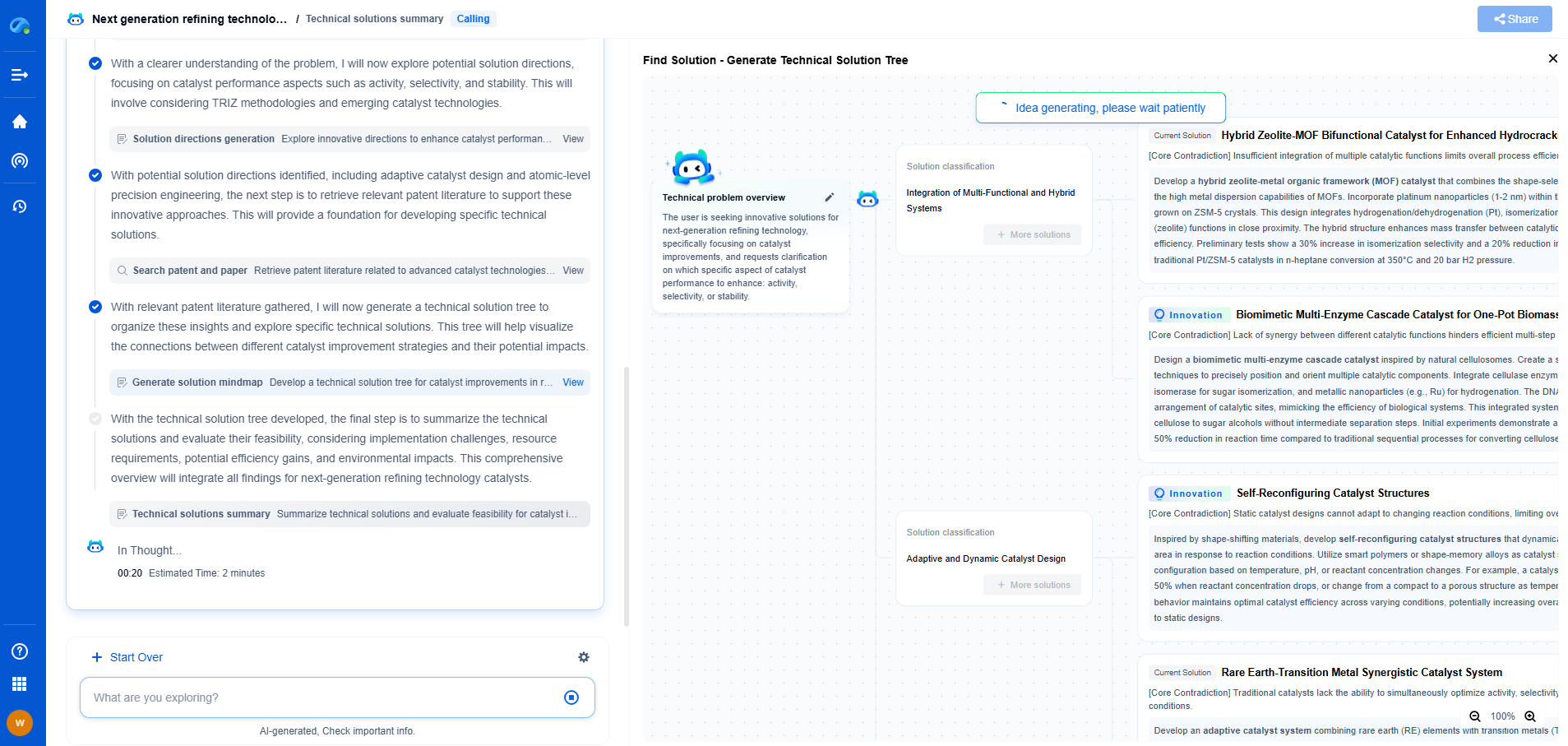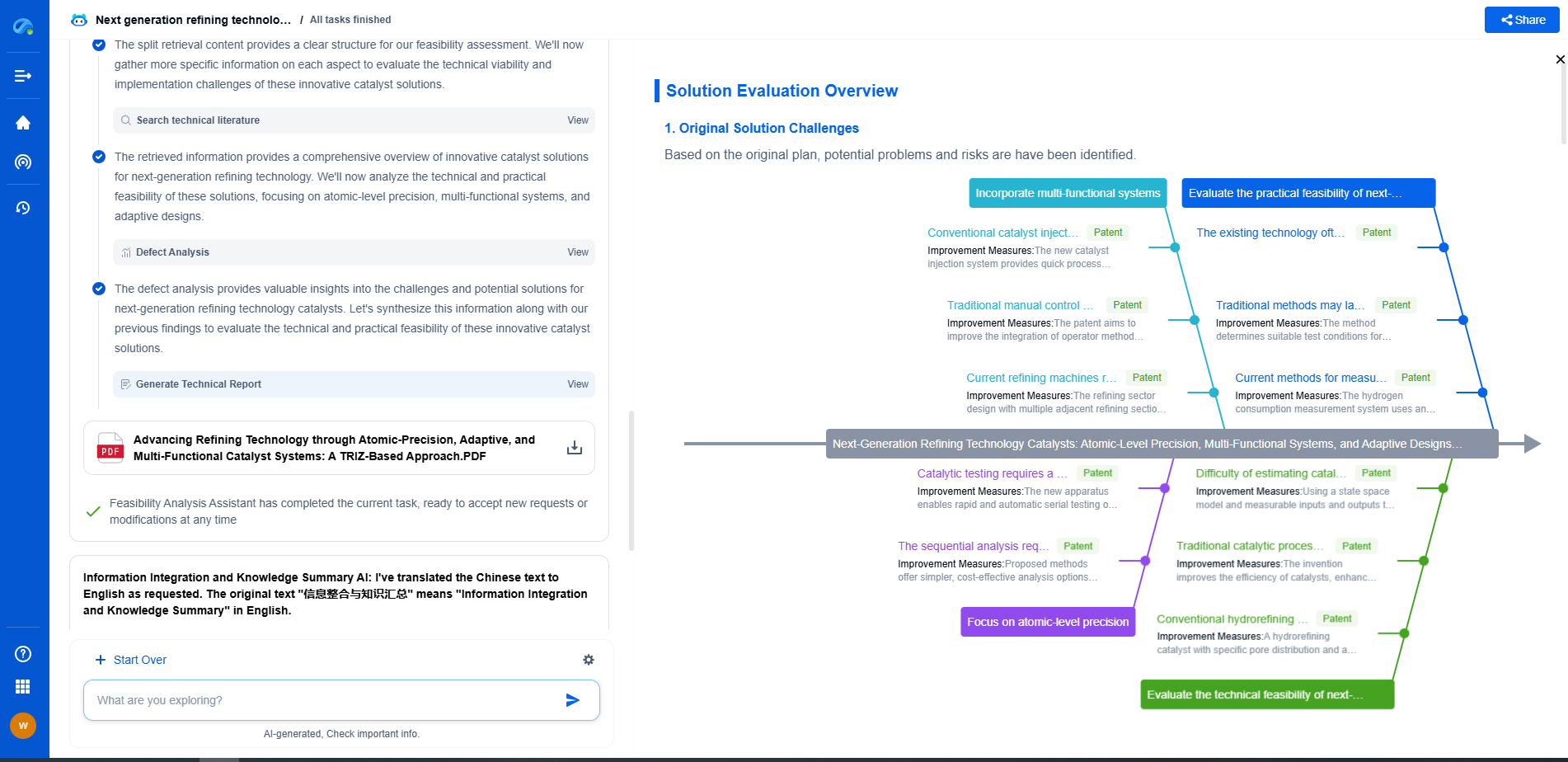How to reduce non-uniformity in plasma parameters?
JUN 26, 2025 |
Plasma non-uniformity is a common challenge in processes such as semiconductor manufacturing, thin-film deposition, and various plasma-enhanced chemical vapor deposition (PECVD) applications. Variations in plasma parameters like density, temperature, and potential can lead to inconsistencies in product quality and yield. Understanding the root causes of non-uniformity is the first step toward addressing it. Factors like chamber design, gas flow dynamics, electromagnetic field distribution, and boundary conditions can all contribute to non-uniformity.
Optimizing Chamber Design
One of the most effective ways to reduce non-uniformity is through optimizing the design of the plasma chamber. The geometry of the chamber can significantly affect the distribution of plasma parameters. For instance, symmetrical chamber designs can help in achieving more uniform electric fields and gas flows. Consider using computational modeling tools to simulate different chamber geometries and identify the configuration that minimizes non-uniformity. Additionally, incorporating adjustable components such as baffles or grids can provide greater control over plasma distribution.
Gas Flow Management
Uniform gas flow is crucial for consistent plasma conditions. Non-uniform gas delivery can lead to variations in plasma density and composition. To ensure uniform gas flow, it is essential to optimize the placement and design of gas inlets. Using multiple gas inlets or showerhead designs can help distribute the gas evenly throughout the chamber. Moreover, maintaining a stable gas pressure and flow rate is critical. Implementing precise flow control systems and regular calibration of flow meters can improve gas distribution uniformity.
Control of Electromagnetic Fields
The distribution of electromagnetic fields within the plasma chamber is another key factor affecting plasma uniformity. Non-uniform electric or magnetic fields can lead to localized variations in plasma density and energy. One approach to mitigate this issue is the use of RF power matching networks, which help in achieving uniform power distribution across the plasma. Additionally, employing magnetic field coils or configurations that allow for adjustable field strengths can help fine-tune the plasma uniformity.
Surface Conditioning and Electrode Design
Surface interactions play a significant role in plasma processes. Variations in surface conditions can cause non-uniformities in plasma parameters. Ensuring that the electrode surfaces are clean and in good condition can minimize these effects. The design of electrodes, including their shape and material, should be optimized to promote uniform plasma distribution. Using materials with low sputtering rates and high thermal conductivity can enhance electrode performance and reduce non-uniformity.
Real-Time Monitoring and Feedback Systems
Implementing real-time monitoring and feedback systems is an effective strategy for managing plasma uniformity. Advanced diagnostic tools such as optical emission spectroscopy, Langmuir probes, and laser-induced fluorescence can provide valuable insights into plasma characteristics. By integrating these diagnostic tools with feedback control systems, operators can make real-time adjustments to process parameters, ensuring uniform plasma conditions. This approach not only enhances uniformity but also improves process stability and repeatability.
Concluding Remarks
Reducing non-uniformity in plasma parameters is a multifaceted challenge that requires a comprehensive approach. By optimizing chamber design, managing gas flow, controlling electromagnetic fields, addressing surface and electrode conditions, and utilizing real-time monitoring and feedback systems, it is possible to achieve more uniform plasma conditions. Each of these strategies can contribute significantly to improving product quality and yield in plasma-based processes. Continued research and innovation in these areas will further advance our ability to control plasma uniformity and enhance the efficiency of plasma technologies.
Empower Electromagnetic Innovation with Patsnap Eureka
From high-frequency antenna arrays and electromagnetic shielding to plasma propulsion and wave-based energy transfer, the electromagnetic domain sits at the core of next-generation technologies. Yet navigating its vast landscape of patents, research papers, and evolving technical standards can be time-consuming and complex.
Patsnap Eureka, our intelligent AI assistant built for R&D professionals in high-tech sectors, empowers you with real-time expert-level analysis, technology roadmap exploration, and strategic mapping of core patents—all within a seamless, user-friendly interface.
👉 Experience Patsnap Eureka today and transform how your team navigates the complexity of electromagnetic innovation.
- R&D
- Intellectual Property
- Life Sciences
- Materials
- Tech Scout
- Unparalleled Data Quality
- Higher Quality Content
- 60% Fewer Hallucinations
Browse by: Latest US Patents, China's latest patents, Technical Efficacy Thesaurus, Application Domain, Technology Topic, Popular Technical Reports.
© 2025 PatSnap. All rights reserved.Legal|Privacy policy|Modern Slavery Act Transparency Statement|Sitemap|About US| Contact US: help@patsnap.com

